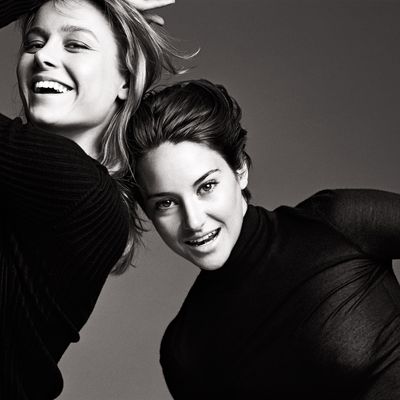
Making a meal for two women who are, collectively, vegan, gluten-free, dairy-free, and actresses on the cusp of superstardom is not easy. And yet, on a Sunday night in early May, I decided to cook dinner for Shailene Woodley, the star of the international hit Divergent, and Brie Larson, who won a good deal of attention last year for her award-winning role in the film Short Term 12. I wanted to see them together, because Woodley and Larson are close friends and allies in their unique quest to raise Hollywood’s consciousness. It seemed to me that their common vision—a hippieish wish to alter the system while doing great work in a business that is tough for women—would blossom in an organic manner over dinner. Since both Woodley and Larson are throwback California girls who disdain the fake and impersonal, I reasoned that a restaurant would be too cold for them. So I invited them to my house.
They were both in New York: Larson was in town at the invitation of Prada to attend the Met Gala, and Woodley, who was also going to the Met extravaganza, was in the middle of a two-day press junket for her latest film, The Fault in Our Stars, which is out June 6 (both are adept at the Hollywood rules). When she’s not working, Woodley likes to disappear, and for a week it wasn’t clear if she was coming to dinner or not. She doesn’t have a permanent home or cell phone—preferring to couch-surf at her friends’ houses. Last December, after working on back-to-back films for a year, Woodley told her representation that she was going camping in New Zealand, but instead she stayed in Los Angeles and remained happily invisible for two months. During a break in April, she vanished again.
This free-spiritedness does not come without opinions. Both Woodley and Larson have been acting professionally since they were tiny children, and they are keenly aware of how Hollywood works and they aim to challenge conventional notions of emerging stardom, especially female stardom. They are outspoken about their goals and philosophy, part of a New Age continuum, on everything from what parts they want to play to what they want to eat. On the healthy-living front, both are particularly passionate: Larson is an avid locavore (as well as a vegan), and Woodley has seriously considered becoming an herbalist. When she’s feeling ill, she makes tea out of pine needles (apparently a great source of vitamin C); she brushes her teeth with clay and whitens them by swishing sesame oil in her mouth for 20 minutes. She staves off yeast infections by giving “my vagina a little vitamin D” sunlight.
Needless to say, as the person cooking, I found this near obsession with the righteous path to be almost paralyzing. Finally, I settled on dishes that I rarely make—vegetable soup with three kinds of beans, steamed asparagus, tomatoes in vinaigrette, and a vast array of desserts purchased at a gluten- and dairy-free bakery. I nervously set the table, worried that the five taxidermied chickens in my dining room would upset my sensitive guests.
Luckily, if they noticed, Woodley and Larson did not comment. Mostly, they seemed ecstatic to see each other. “We have a primal connection,” Woodley said as she embraced Larson. Woodley, who is 22, is tall and has beautiful long limbs that can make her seem, depending on her mood, either coltish or innately elegant. Her brown hair, which she cut short for her role as a terminal cancer patient in Fault, and her hazel eyes, which subtly slant up at the corners, give her face a kind of exotic androgyny. Larson, who is 24, is more girlish: blonde and pretty in a way that is mutable. Her looks easily go up or down—with makeup, Larson can be effortlessly glamorous; without it, she looks familiar, like someone you think you know but can’t quite place. Both women are very slim and were dressed in narrow jeans and T-shirts, but Woodley had on striking red lipstick. “Journalists at the press junket today saw my lipstick and said, ‘I thought you were a hippie and you were never going to wear makeup.’ ” Larson shook her head in solidarity. “Well, red lipstick makes me feel sexy,” Woodley continued, sounding proud. “And I wear it for me, not for you. My new mantra is: ‘You do you, and I’ll do me.’ ” Larson nodded as they wandered around my apartment. “To find the courage to do what I want to do for myself has been hard,” Larson replied. “We’re both trying all the time to be truthful. And that can be exhausting.”
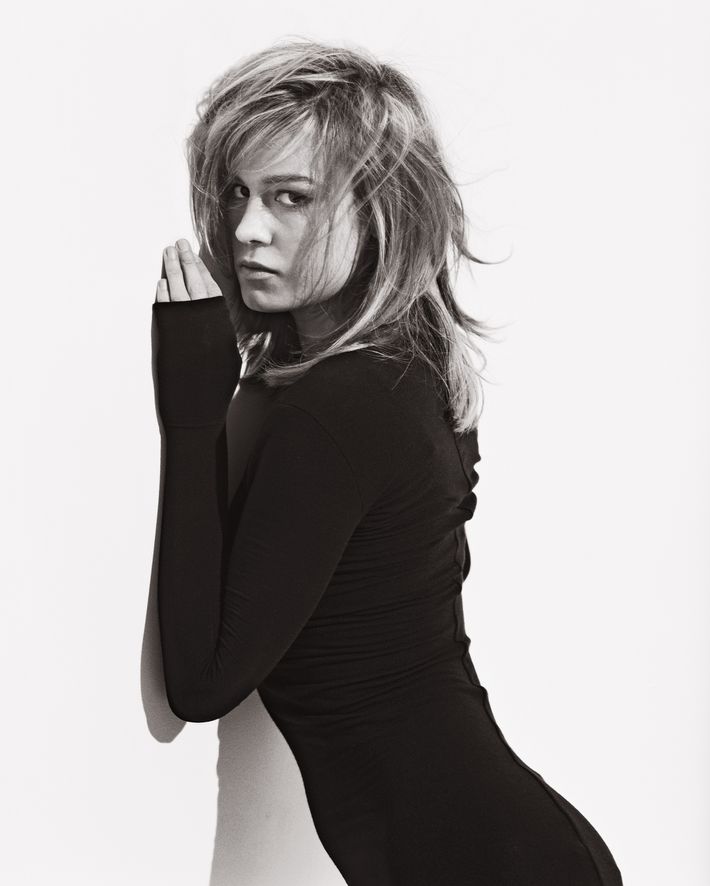
Woodley looked up at the wrought-iron chandelier in my dining room. I worried that she was going to disapprove of my non-ecocentric bulbs, but instead she said, “It’s so good to be out of the fluorescent light in the hotel.” Larson sat down at the table. “I walked here from my hotel,” she said. “Lately, I’ve been getting too much attention with the Met Gala and work going so well that I try to find rejection in my day. I’ll seek out someone on the street or at the farmers’ market and ask for something where I know they’ll say no. No one likes rejection, but it’s real. And I don’t want to lose that feeling.”
“You create the story of your day,” Woodley said enthusiastically. “And you want that story to be real.” As I ladled the stewlike soup into bowls, I felt like I was back in college, waging idealistic battles about individuality and the authentic life. Sadly, even then I was definitely more superficial than Woodley or Larson, but their romantic belief in emotional honesty, the power of culture, and great friends will always be contagious. They are throwbacks to a less technological time: Neither is active in social media, preferring older modes. “My favorite thing in the world is writing a letter and sending it snail mail,” Woodley said as she nibbled on a tamari-seaweed rice cracker. “I write letters every day.”
They both approved of my soup (thank God!) and did not question my out-of-season tomatoes imported from some faraway, nonlocal place. The girls talked like long-lost sisters, airing their frustrations and expectations in equal measure. Woodley, for instance, hates sleeping scenes in movies. “It’s so ridiculous the woman wakes up and she’ll have makeup on! I don’t even look like that after a photo shoot!” And both women worked hard not to be judgmental. “Girls in this industry sabotage one another,” Larson said. “We will never do that.” It was a lovefest with big stakes: Together and apart, they were constantly pondering how to improve the movie business. Or, at least, how to mobilize their army of two.
“When Shai and I met each other, it was boom!” Larson said. “We understood each other instantly. We’re the lighthouse for each other: the beam that stays focused and guides you home.” Woodley seconded. “Together,” she said, “we are able to refine our ideas. In the past, we would talk about how people told us that if we wanted ‘success,’ we’d have to dress a certain way, act a certain way. Brie and I always felt different, and, suddenly, when we met, that was okay. In fact, it was great.”
They became fast friends on the set of The Spectacular Now in 2012, a coming-of-age drama about a scholarly high-school girl (played by Woodley) who falls in love for the first time with her roguish, quasi-alcoholic classmate. Larson played his ex-girlfriend, a smarter-than-she-looks sloppy prom queen. “In Brie, I immediately recognized another strong female spirit,” Woodley told me a few days before our dinner. “Brie has really high standards not only for herself but for the world.”
We were in a coffee shop on the far west side of Chelsea in Manhattan. Woodley was wearing her usual utilitarian uniform of black leggings, weblike rubber shoes that approximate the feel of bare feet, and a sweatshirt that read RADARTE, an homage to Rodarte, the artisanal-like bohemian sisters-designers whom Woodley had chosen to dress her for the Met Gala. “I was invited, and they told me they would let me know what designer they wanted me to wear. I said, ‘I’m not going unless Rodarte dresses me,’ ” Woodley said. Her status as the next actress primed to be a global sensation allowed her the right to choose.
“Spectacular Now made me fall in love with movies again,” Woodley continued as she poured a packet of instant chaga, a mushroom-based powder with strong antioxidant properties, into her mint iced tea. “It tastes like dirt,” she said, interrupting herself. “But I like the taste of dirt.” Woodley took a long sip. “Before Spectacular Now, I was seriously considering quitting this business. That movie made me want to be creative again, and Brie was very much a part of that time.”
Three years ago, Woodley’s disenchantment with Hollywood coincided with her biggest artistic success, her performance in The Descendants. In the film, which was set in Hawaii, Woodley played George Clooney’s troubled but canny teenage daughter. There was a scene that permanently altered Woodley’s public profile: Her character has just been told that her mother, who has been severely brain-damaged in a boating accident, will not survive. The script read: “She goes underwater and contorts her face,” but Woodley, who used to scream out her rage underwater in her family’s pool in Simi Valley, a suburb of Los Angeles, had another idea. “I decided to cry underwater,” Woodley said now. “We did it four times, and it worked.” The crying-underwater moment was visually stunning and underscored the themes of The Descendants, a meditation on emotional upheaval in the midst of extreme natural beauty.
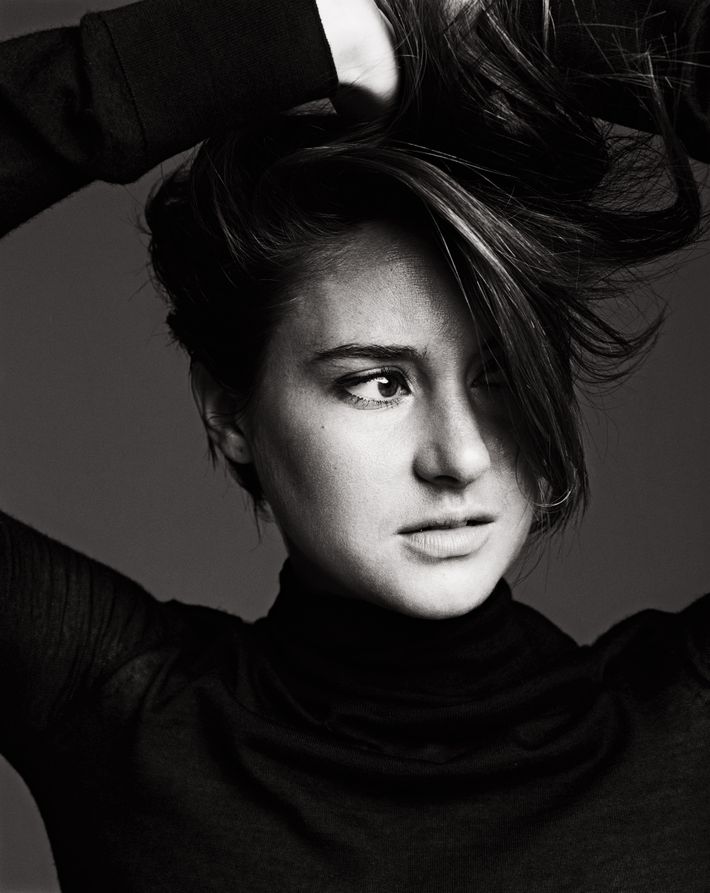
After the movie’s release in 2011, Woodley was the girl everyone wanted. “People were suddenly asking me all kinds of questions,” Woodley said. “What would my next movie be? What was I wearing? Did I think I would get an Oscar nomination? I was told to start dressing more ‘cosmopolitan’ for my ‘campaign.’ I remember saying, ‘Are you telling me that if I dress a certain way, my chances are better for an Oscar? That makes me want to show up naked.’ ” Woodley smiled. “They said, ‘Well—if you’re naked, your chances will be very good.’ ”
Woodley paused. A woman with short hair walked by, and Woodley seemed overjoyed. “I now see all these women with short hair, and I love that.” I asked her if it was scary to chop off her nearly waist-length hair for a movie role. “Oh, no,” Woodley said. “I want to go shorter!”
For most of her life, Woodley was not this confident. At 5 years old, she started performing in acting classes. When her mother, an elementary- and middle-school guidance counselor, and her father, an elementary-school principal, were approached by an agent about representing their daughter, they were skeptical. “They didn’t know what an agent was,” Woodley explained. “But I wanted to act. I always treated it like an extracurricular activity—other kids had soccer or gymnastics, and I had acting.” She worked consistently on commercials and television shows, landing her first starring role at 16 on the ABC Family drama The Secret Life of the American Teenager. “I was a successful child actor, but I wasn’t a famous child actor,” Woodley continued. “I was never in a big movie. Thank God. When The Descendants came out, I felt pressure for the first time. I’d been acting since I was 5, but I’d never really done any photo shoots or interviews, and I certainly had never been asked over and over about my Oscar chances.”
Woodley seriously considered changing professions—she thought about going back to school to get a degree in psychology or furthering her studies in herbalism. And then her agents sent her The Spectacular Now. “The script reminded me of why I do this job, which is to tell stories that have meaning and impact,” Woodley said. “I thought, Do I want to quit? Or do I want to choose this life? I realized that we choose everything every day, and I’ve decided to choose this job. I decided that I needed to own my day before my day owns me. Every morning, I do this private ritual that puts me in my skin, and then when I go into these environments—premieres, meetings, photo shoots, interviews—I can do it all and feel like myself.”
Coincidentally, being an outspoken neo-hippie was also a boost to Woodley’s profile. During The Descendants, she was beautiful but shy. Now she is seen as an unpredictable, lively, great-looking counterculture eccentric with talent and charisma. Her politics are personal rather than confrontational, which in Hollywood’s eyes classifies her as a maverick rather than a threat. Since the days of the studio system, the movie business has thirsted for outsize personalities, and Woodley represents a new breed: the stunning free spirit who understands the rules of the game.
This newfound strategy was reinforced by Larson on the set of The Spectacular Now in Athens, Georgia. Although the weather was scorching hot, the two actresses went for long hikes and discussed ways to navigate the obligations of the movie business while maintaining their integrity. “It was a constant dialogue,” Woodley recalled. “First we were venting about things we are supposed to do and don’t want to do. Then we agreed that the biggest issue is to pick films that are honest and not detrimental to girls. We realized that our choices might make people say we are ‘weird.’ But rather than be ashamed of that or try to change, we embraced it: Brie and I decided that we’d rather be weird than anything else.”
On a chilly afternoon in March, Brie Larson, in a bright-red vintage sundress and no shoes, was putting plates with artfully arranged food on her dining-room table at her two-bedroom ranch-style house in Studio City in the San Fernando Valley. Her boyfriend, Alex Greenwald, who was in the band Phantom Planet, was working on a song in the living room, and her two small dogs, Bowie and Jonathan, were monitoring her every move. An excellent cook, Larson had prepared a spread for lunch of, among other things, homemade flax crackers, blistered almonds, a green salad with sprouted mung beans, and avocado wedges sprinkled with purple sea salt. “Brie is a gourmet,” Greenwald yelled from the living room. “I’m not a gourmet,” Larson replied. “I just like the planet.”
Part of the reason Larson began investigating farmers’ markets about five years ago was to stay grounded in a business that she found challenging and deeply unsettling. Unlike Woodley, who went to a regular high school, Larson—the daughter of two homeopathic doctors—was home-schooled while she pursued an acting career. As a result, Larson seems a little older and more solitary. While Woodley has innate movie-star pizzazz, Larson is a chameleon: Her looks are less specific and allow her to transform into a wide range of characters, from the popular girl in The Spectacular Now to the stripped-down group leader in charge of emotionally disturbed children in Short Term 12. More than to Woodley, acting feels primary to Larson. At 6, Larson told her mother that it was her “dharma” to be an actress. Her mother agreed to acting lessons, and, if Larson stuck with the classes for a year, she’d consider getting her an agent. At 7, she was cast in her first role, a sketch called “Malibu Mudslide Barbie” on The Tonight Show With Jay Leno. Larson and another angelic-looking child played happily with their Barbie dolls and then, in a diabolical turn, annihilated them with a toy truck full of sludge.
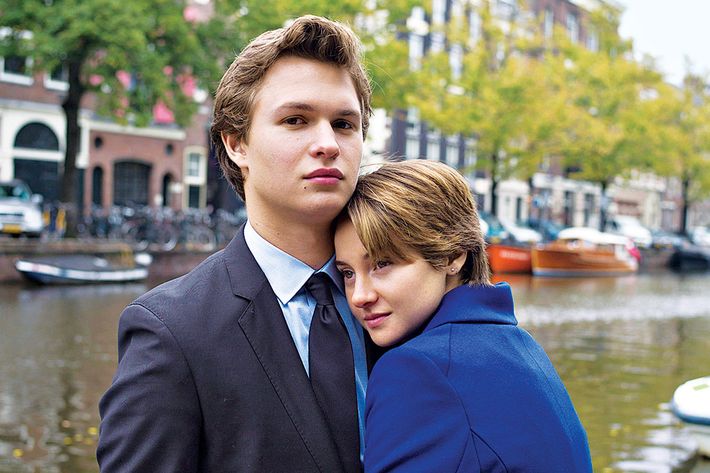
“I felt like a star,” Larson recalled. “But it was not an easy path, especially when I hit my teen years. Then, I wasn’t pretty enough to be the lead—they had Megan Fox ready for that role. And I wasn’t considered mousy enough to be the friend. I often fell in between. I came close enough on many roles to get both encouraged and completely devastated: It was down to me and Evan Rachel Wood for 13, and she got the part; I was up for the lead and the best friend in Juno, but I wasn’t cast as either.”
Again and again, Larson thought about leaving acting behind, but she was inexorably drawn to the job. “It was all I knew,” Larson continued. “My identity was tangled up in the parts that I had played since I was a child. I would go through my closet and only see audition clothes: Brie looking older, Brie looking ’60s, Brie looking ’40s, Brie looking younger in the future. I realized that if you’ve been acting since you were 7, there are a lot of stories inside you that are not actually yours. It’s a blessing to play all these different characters, but it’s also confusing. And overwhelming. I can’t tell you how many times I quit only to realize that when the work has been your life, you don’t really have a life without it.”
I first noticed Larson in a film called Rampart, a violent character study about a corrupt cop played by Woody Harrelson. Larson played his furious, confrontational daughter. She had messy Day-Glo streaks in her hair and a brutal demeanor that was shocking and palpable. When I saw her again, two years later, in Short Term 12, I didn’t recognize her. Larson’s character in that film was both secretive and strong—a difficult equation that she made believable. Larson heard about Short Term 12 during The Spectacular Now: She was having dinner in Woodley’s rented apartment when she was offered the part. “We were in our pajamas, eating a meal that I cooked,” Woodley told me earlier. “Brie got a phone call, and suddenly everything was different in the best possible way.”
Short Term 12 was Larson’s first lead role in a film. “I was terrified,” she said. “And excited. It was confusing: When we screened the film at the South by Southwest festival for the first time, I had never had people look at me that way before.” Like Woodley, she was reluctant to say too much. “I didn’t want to talk about the movie,” Larson said as she cleared the table. “After a magic show, the magician doesn’t explain how he does the tricks. You just want to believe the magic. I’m still trying to find out what I will and won’t say. If I lose my mystery, I lose the most important part of my job.”
Larson was nominated for a Gotham Award for Short Term and was convinced that she wouldn’t win. When they called out her name, her shoes were off. Suddenly Larson was besieged with inquiries and offers. “When your career has been like a parent who smacks you in the face a couple of times a week and then, in the last year, they say, ‘I’m now going to only hug you,’ it’s very hard to find a balance. I’m still waiting for the punch.”
In early March, Woodley was in New York to promote Divergent, in which she plays Beatrice “Tris” Prior, a strong, unclassifiable warrior in the dystopian future, on The Tonight Show Starring Jimmy Fallon. Based on a best-selling young-adult adventure story, Divergent, which cost $85 million to film, is the first part of a trilogy that Lionsgate, which also produced the massively successful Hunger Games worldwide juggernaut, is hoping to turn into another international franchise, with a similar strategy. When Jennifer Lawrence was cast as Katniss Everdeen, she, like Woodley, was best known for her work in independent film.
Before taking the part in Divergent, Woodley sent an email to Lawrence, whom she has never met. “I asked her advice,” Woodley told me. “I do think we have things in common. We both believe in having fun and still telling the truth. We’re not fashion girls, but we play the game. And we both care deeply about being actors.” Lawrence told Woodley to take the part—that the downside (fame, loss of privacy) was vastly outweighed by the advantages of starring in a potential blockbuster. By switching between big action films and small character-driven dramas, Lawrence, who is now the biggest star in the world, has changed the game for actresses. In the past, women were typed by genre: Julia Roberts does not do action films and Angelina Jolie does not do romantic comedies. Like Lawrence, Woodley wants to defy genre typecasting: While Divergent and its upcoming sequels are aggressive women-warrior films set in a dark, special-effects future, The Fault in Our Stars, Woodley’s latest release, is a small, deeply touching first-love story between two doomed teens. Throughout Fault, Woodley’s character, Hazel, who has barely survived lung cancer, carts around an oxygen tank, which is connected to her nose by a tube. Fault is a tearjerker with a rabid following: The trailer alone garnered nearly 20 million views online. “The only qualities Tris and Hazel have in common is that both are brave,” Woodley said. “In Fault, I am trying to rewrite what a female lead can look like: You’ve never seen a woman on the poster for a movie with a cannula in her nose.”
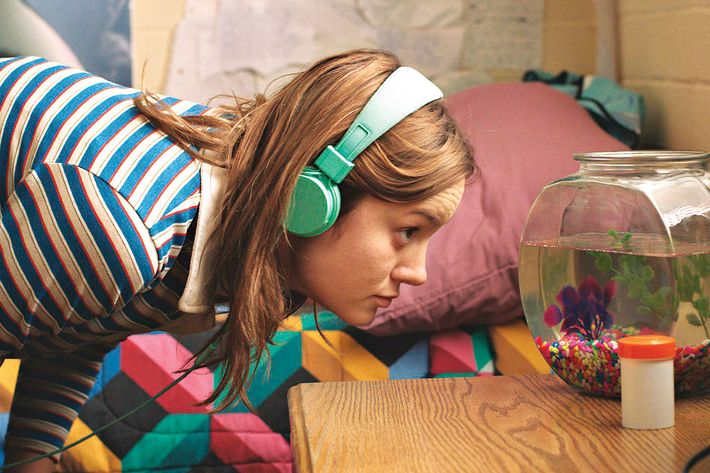
On the afternoon of the Fallon taping, Woodley was dressed in her glam public-appearances attire: high heels, long legs, short dress. She looked fantastic. She brought on a large, rather phallic-looking horseradish root and discussed its virtues with the host, who looked frightened. Halfway through the conversation, Fallon, who can border on golly-gee cheerleading during his interviews, said, “How do you feel about being compared to Jennifer Lawrence?”
Woodley paused. “Well,” she said. “Comparisons always lead to despair.” There was sudden silence, and then the audience, which was shocked and angry, began to boo. Fallon said something like “Whoa,” and Woodley held her ground. “As women, we are constantly told that we need to compare ourselves to a girl in school, to our co-workers, to the images in a magazine,” she told me later. “How is the world going to advance if we’re always comparing ourselves to others? I admire Jennifer Lawrence, but she’s everyone’s favorite person to compare me to. Is it because we both have short hair and a vagina? I see us as separate individuals. And that’s important. As women, our insecurities are based on all these comparisons. And that creates distress.”
The audience in Studio 6B wasn’t listening, and neither was Fallon. That section of the interview was cut by the Tonight Show producers: Later that evening, when the show aired, Woodley’s gender politics were erased. “It bothered me, because it’s human nature to feel bad if you are booed by an entire audience,” Woodley said, sounding completely unbothered. “But in these few moments that we have here on Earth, are we going to torture ourselves? Or are we going to allow our lights to be dimmed? How do we expect men to respect women or women to rise to more power when we don’t respect our queendom in the same way that men respect their kingdom?”
And yet Woodley does not view herself as an outspoken feminist—that would be too limiting. She is more of a humanist, interested in connecting with as many people as possible. The week after the Tonight Show incident, I watched her on the red carpet at the gala Divergent premiere in Westwood Village in Los Angeles. It was a screaming-mob, bright-lights, old-Hollywood event. As she slowly made her way toward the entrance of the theater, Woodley hugged members of the press and many fans. Again, no one does this. She has a particular style of hugging: With every stranger, she embraced the right side of the body and then the left, to give equal time, as she sees it, to both sides of the heart.
“I started hugging people because I was tired of fake interactions,” Woodley explained later. “You have only 30 seconds with a new person. I will give you a hug so you know I’m real, and then you’re real too. It helps to cut the bullshit and say, ‘Now—what do you really want to talk about?’ But we’re born into a fear-based society that prefers to label things, and now I’m labeled ‘Shai, the hugger.’ Everyone went crazy when I said that I liked to get sunshine on my vagina. But why not? It’s fucking great! You should try it! I wasn’t hurting anyone, but still people cautioned me not to say things like that. After The Descendants, I was afraid, but I’m not anymore. There’s really nothing to lose. And I might even give someone else the courage to speak up.”
The last day of filming on The Gambler, a reimagining of the ’70s film starring Mark Wahlberg and Brie Larson, was on March 14 on the USC campus. Larson plays a brilliant student who is romantically entangled with her professor, portrayed by a (very thin) Wahlberg, a compulsive gambler. On a sunny morning, they were shooting a simple scene: Larson, in jeans with a leather bag slung over her shoulder, drove her character’s yellow Yugo past Walhberg, who was waiting for the bus. As Amy, her character, Larson rolled down her car’s window and said, “If I have to pull you into an inappropriate relationship to get you out of this job, then it’s something I’m willing to do.”
From the scene, it was impossible to tell the personality of Larson’s character. “I won’t play just the girlfriend,” she told me during a brief break. Larson had a camera around her neck and was taking parting photographs of the crew. “Recently, since Short Term, I’ve been offered all kinds of parts,” Larson continued. “A big producer offered me the part of the pretty girl that waits at home for the guy, and I couldn’t do it. That’s not a story I ever want to tell.”
Larson’s next project is a dramedy called Trainwreck, written by Amy Schumer and directed by Judd Apatow. The raunchy performer Schumer is playing a version of herself, and Larson was cast as her sister, who will also be on-set. “Judd let me go to auditions for some characters in the movie,” Larson said as she gulped down some water. “Two seconds ago I would have been the one trying to get the job, and now I’m in the room deciding.” She paused and then smiled ruefully. “I could have saved years of my life if I had sat on the other side of the table before. I now see how people screw themselves out of the job: They are too self-deprecating or they don’t know their lines or they tell too many jokes or they think they can do the scene three ways.” I asked Larson what her particular auditioning flaw was. She smiled again. “I probably pushed too hard,” she said. “I always really wanted it. And that can scare people off.”
Although she had to audition to get the role in The Gambler, the director, Rupert Wyatt, knew her work in Short Term 12 and immediately cast Larson. The movie is set to be released by Paramount later this year for awards season, and it is definitely not an independent film. Her world is getting bigger: A few weeks ago, Larson was asked by Prada to be at its table at the Met Gala in May, arguably the biggest social event of the year. It is a sign of arrival, of acceptance by a world that had eluded Larson for years.
Not surprisingly, she wasn’t willing to wear whatever gown Prada had in mind. “I wanted to feel safe,” she said. “Too many times, I’ve put on the dress and the heels and tried to be this person that they want me to be, and I can feel myself getting itchy. Photos are taken at these events, and those photos are just another thing for women to compare themselves to and feel put down. I know that I can start going off in my brain about silly things like, Why is Cate Blanchett’s skin so perfect?! And I need to stop myself. So, the Met Ball gown has to be a representation of me. I don’t want to go as someone else’s idea of me—that would be lying.”
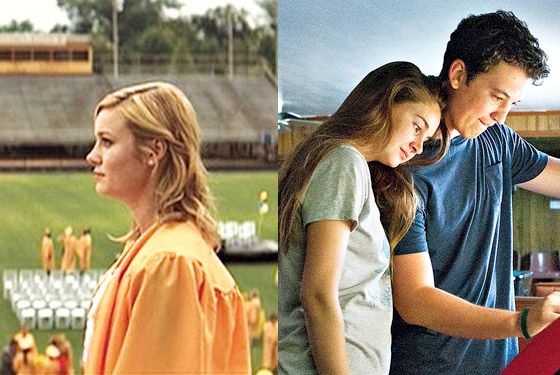
The Prada team was intrigued by Larson’s involvement and allowed her to collaborate. She had an idea about channeling Joan of Arc, another strong woman with a cause. Larson sent Prada some inspirational photographs of churches and Renaissance paintings and three documentaries on the importance of the colors gold, blue, and white. The final outfit is a shimmery tunic and matching pants with a deep-V neckline in gold sequins. The overall impact is distinctly royal. An actor walked by and asked Larson if she was going to the cast party that would be held on the weekend. She said she wasn’t sure. In the end, she didn’t go. “Before this movie,” Larson explained to me, “I would get so sad when a movie ended. Every cast party was like a funeral being held for my career. Before this, I always thought it would be my last job. Now I have another job waiting. For the first time in my life, I feel like I’m actually an actor.”
Back at my house for dinner, Woodley and Larson had moved on to dessert. “These are delicious,” said Woodley, mid-brownie. Since it was nearing the end of the evening, I asked Woodley, now that she was 22, if she was considering playing non-high-school parts. Even in the racy White Bird in a Blizzard (out late 2014), directed by Gregg Araki, Woodley may have multiple nude scenes, but her character is still in high school.
“I saw Fault last night,” Woodley answered, “and it was nostalgic in a way. That will be the last teenage movie that I’m going to do. Last year, when I made Fault, I could still empathize with adolescence. But I’m not a young adult anymore—I’m a woman. But I’ve never played my age before and that’s my next goal. It’s scary.”
Larson, who was tasting some sour-cherry cake, offered words of encouragement. She asked about the sex scenes in White Bird: “Was it awkward? Romantic scenes can be so awkward.” Woodley, who had moved on to a ginger cookie, shook her head. “It was so much fun,” she said. “Everyone was freaked out because I’m nude, but in real life, when I have sex, I’m naked. I don’t have a bra on, and I don’t usually have panties on. So let’s make a real movie! Let’s bring truth to the scene! I didn’t want to be exploited, but this girl—like most girls when they first have sex—doesn’t know what she’s doing.
I wanted their first kiss to be sloppy, teenagerish making out. When you’re younger, you think you know what to do, but you really don’t.”
Since both women were child actors, I asked if their first kiss was on-camera. Woodley said no, but Larson couldn’t recall. “Isn’t that terrible!” she said.
“I can’t remember if my first kiss was in real life or on a TV show!”
Suddenly, Woodley gasped, and I thought she might be choking. “Oh my God—I almost forgot,” she exclaimed. “You got the part in Room!” Larson looked happy but a little shy. Apparently, in the past month, Woodley and Larson were the last two actresses up for the same role, the lead in an adaptation of a 2010 best-selling novel about a woman and her son who have been held captive for years in a small room.
“I’m so excited,” Larson said.
“It will be a masterpiece,” Woodley replied. “And you’re the right one for the part.” I asked if it was awkward for them to be pitted against each other. “I knew it was down to the two of us,” Larson said, “and I realized that, either way, the movie would be amazing. When I got the part, my agent said, ‘Team Shai is really happy for you!’ ”
“And I was!” Woodley said. Being a less evolved, competitive person, I must have looked skeptical. “I just wanted the movie to be made,” Woodley continued as she shot down my doubts. “And I know Brie will be brilliant. She can use this film as a platform to say something important about women and hostility and the courage it takes to speak your mind.” Woodley paused. “Oblivion is inevitable,” she continued. “Making Fault, which is about the constant presence of death, has taught me that. As long as we tell the truth, nothing else matters. And that’s what Brie will do. Hopefully, she’ll change the world.”
*This article appears in the June 2, 2014 issue of New York Magazine.

